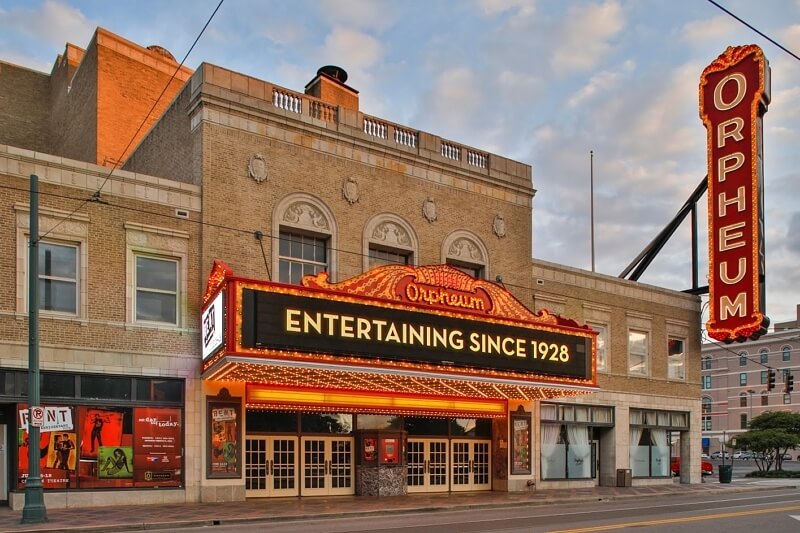Artistry and architecture convene in these six historic Southern theaters, each of which were built in celebration of the arts and stood as cultural landmarks within their communities. Faced with the Great Depression, the arrival of television and urban renewal, many theaters across the country were demolished or left in disrepair, which makes the ones that survived worthy of celebrating.
Preservation and protection of these historic sites ensure their place in the fabric of their communities as entertainment destinations. From Tennessee to North Carolina to Kentucky and beyond, these historic Southern theaters stand as shining examples of timeless architecture and a continued appreciation for the arts.
Tivoli Theatre | Chattanooga, TN
The Jewel of the South, as the Tivoli Theatre is known, is revered for its Beaux-Arts style and stunning display of architecture. Since its opening in March of 1921, the Tivoli has remained a cultural anchor in the Chattanooga community. Theatergoers are greeted by the grand lobby where an exquisite chandelier hangs from the soaring ceiling — an example of the building’s grand design.
Once popular for silent movies, the theater saw a decline in visitors with the emergence of television in the 1950s. Without regular, steady business, the theater fell into disrepair but was saved from tragic demise with a grant from Chattanooga’s Benwood Foundation in 1962. On the National Register of Historic Places, Tivoli was purchased by the City of Chattanooga in 1976. A two-year, $7 million restoration project in 1986 returned the theater to its original glory, and today, the Tivoli is home to the Chattanooga Symphony & Opera and is a destination for live music and Broadway productions. The Tivoli Theatre Foundation, formed by Chattanooga Mayor Andy Berke in 2015, ensures its lasting success.
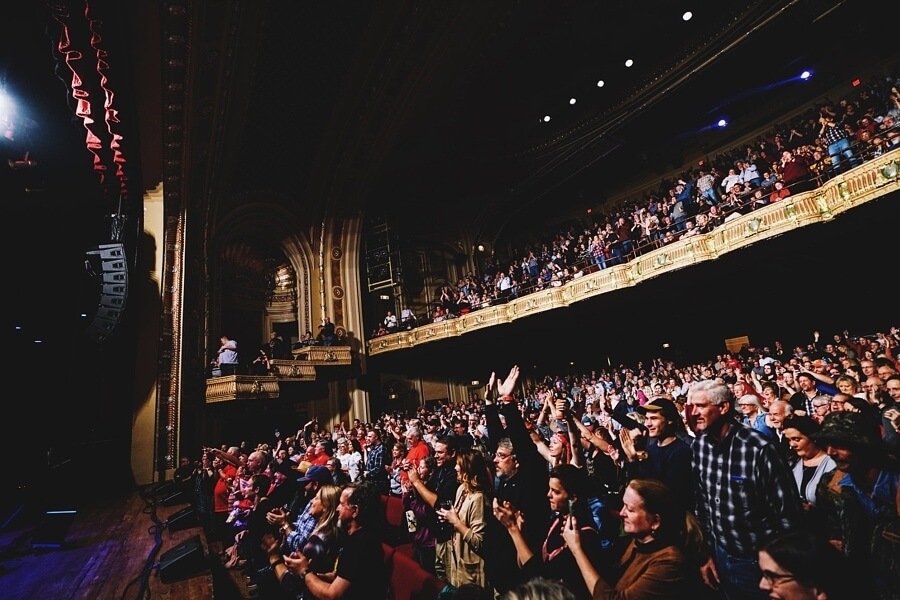
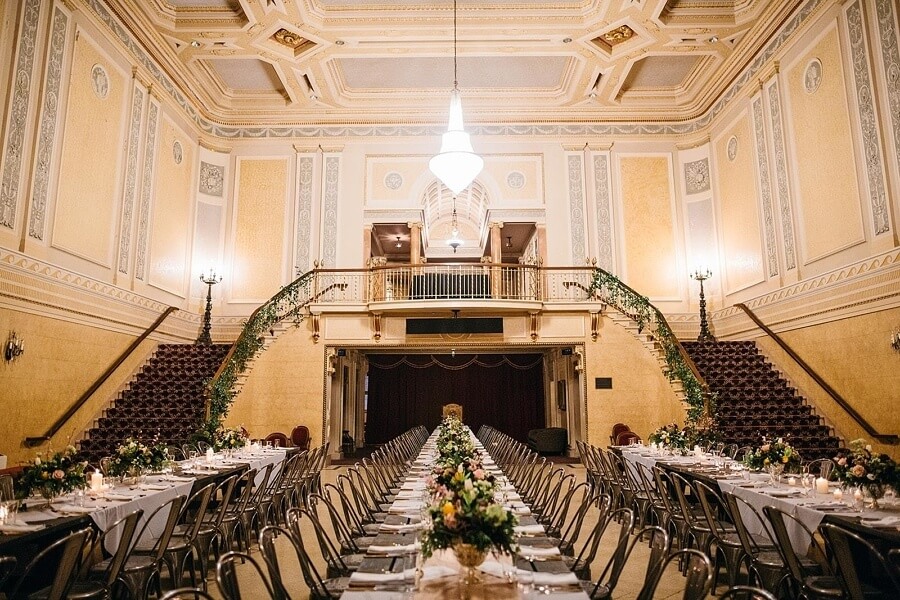
Fox Theatre | Atlanta, GA
Situated on the corner of Peachtree and Ponce de Leon, the Fox Theatre is a display of unusual and noteworthy architecture. The mosque-style structure, originally designed as the headquarters for Atlanta’s Shriner’s Organization, draws architectural influence from Islam, as well as the Alhambra in Spain and Egypt’s Temple of Karnak. Ornate detailing includes gold leafing, rich textures and colors, and notable trompe l’oeil art. The ethereal interiors are as fantastical as the on-screen movies.
A year after construction was complete, the 250,000-square-foot auditorium was leased to movie mogul William Fox, signaling its start at a cinematic theater. On Christmas day in 1929, the theater officially opened with the premiere of Steamboat Willie. Affected by the Great Depression, the theater was sold again after only 125 weeks under Fox’s ownership.
After decades of showing movies and live performances, the Fox faced urbanization and many feared its destruction. The community rallied behind the institution with a “Save the Fox” campaign, protecting the theater and helping the Fox gain recognition as a National Historic Landmark in 1976. A hotspot for private events, Broadway performances, concerts and live entertainment, the Fox remains a staple of the community today.

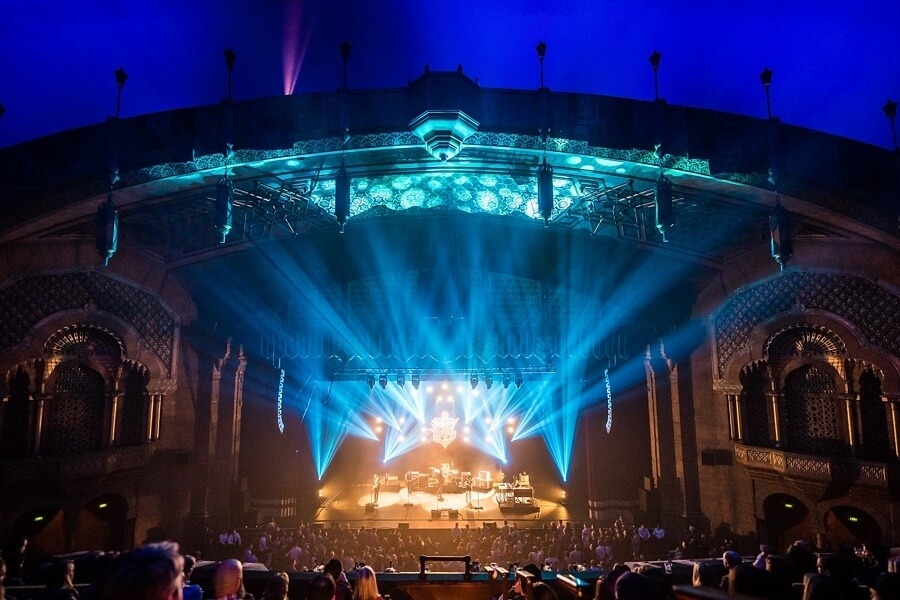
Thalian Hall | Wilmington, NC
The only surviving theater designed by renowned 19th-century architect John Montague Trimble, this historic city hall and theater boasts classic revival architecture and late Victorian elements of design. Thalian Hall is a former opera house, in addition to the town government and the library, making it a political and cultural hub in historic Wilmington, NC.
Thalian Hall has been in continuous use since its opening, and a handful of renovations and expansions have allowed the theater to accommodate the ever-growing audience of today. The two-story Thalian Hall is now home to three performance venues, the Main Stage, the Grand Ballroom, and the Ruth and Bucky Stein Theatre. According to Thalian Hall’s website, the three venues annually host 422 events attended by nearly 80,000 people.
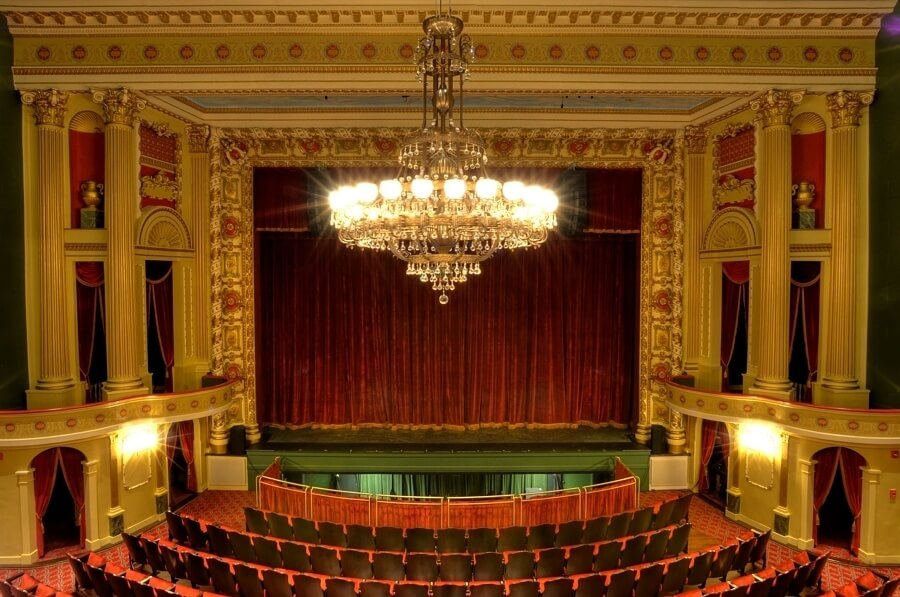
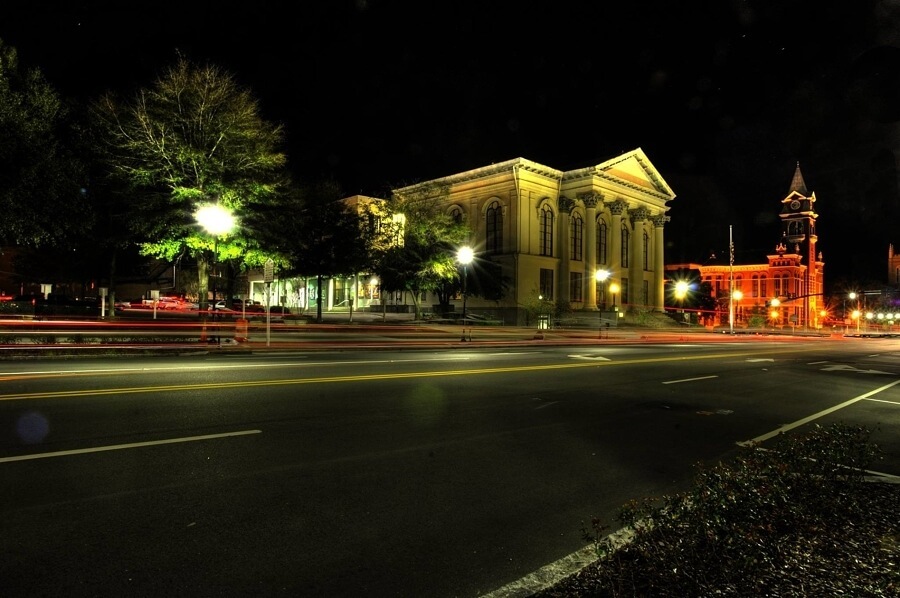
The Orpheum | Memphis, TN
The Orpheum has been reborn and revitalized countless times since its opening in 1890. Originally known as Grand Opera House, the theater was outfitted in Renaissance architecture with brocade draperies, crystal chandeliers, gilded moldings and a Mighty Wurlitzer organ. In 1907, the theater was renamed the Orpheum, and after a fire in 1923, the theater received a $1.6 million renovation designed by architects C.W. and George L. Rapp. The 2,800-seat auditorium was purchased again during the Great Depression and renamed the Malco. The Orpheum was reinstated as its official name in 1977 when the theater, which at the time was in danger of demolition, was purchased by The Memphis Development Foundation (now called the Orpheum Theatre Group) and added to the National Register of Historic Places. At that time, Broadway and live performances replaced first-run movies.
In the early ’80s, a two-year $5 million renovation was completed and celebrated with a performance of Phantom of the Opera on the new stage. The Orpheum grew not only as a destination for live entertainment but also for community and educational programming. In 2015, The Halloran Centre for Performing Arts & Education was started as an outlet for Orpheum Theatre Group to entertain, educate and enlighten the community.

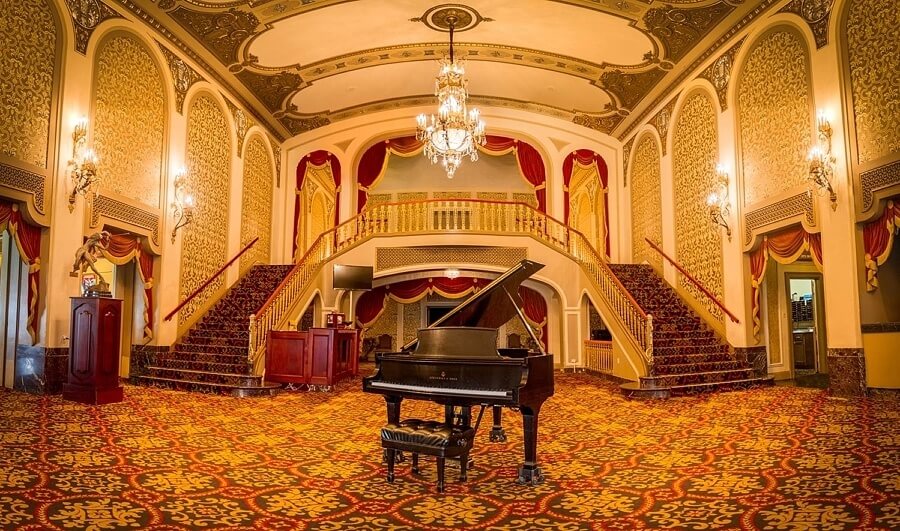
Saenger Theatre | New Orleans, LA
Designed by Emile Well and built by Julian Saenger in 1927, Saenger Theatre introduced a new place for motion pictures and live stage shows on Canal Street. Reminiscent of a 15th-century Italian courtyard and garden, the interior design features arched surroundings, columns, decorative moldings and Greek and Roman statuary. The theater was added to the New Orleans landmark list as well as the National Register of Historic Places in the late 1970s.
In 2005, Hurricane Katrina brought devastating destruction of the historic venue, but the cultural landmark was renovated as part of a $53 million project to kickstart the revitalization of Canal Street and the New Orleans Central Business District. The Saenger reopened in Fall of 2013 with recreations of the original finishes and color scheme and, most notably, the original 2,000-pipe Robert Morton organ.
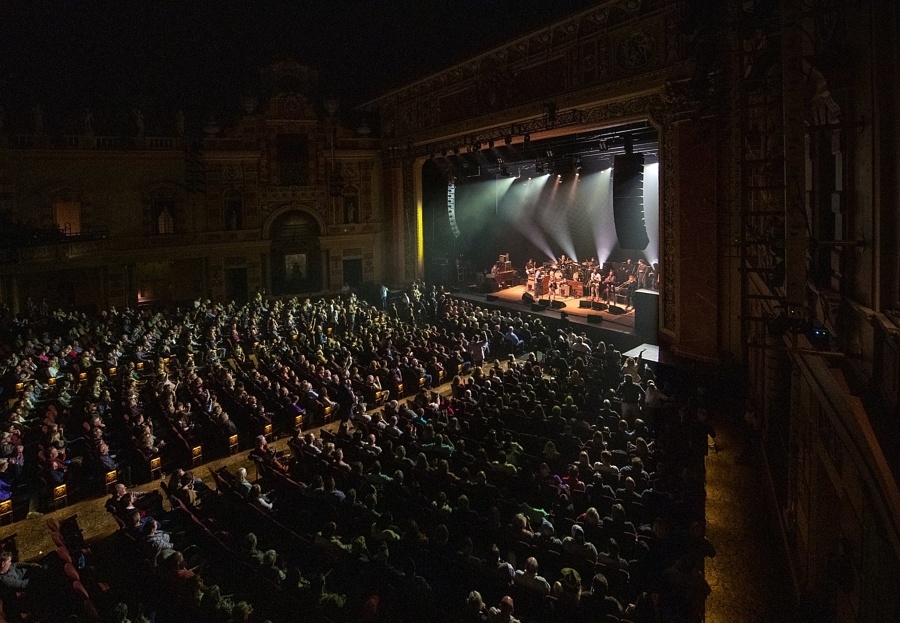
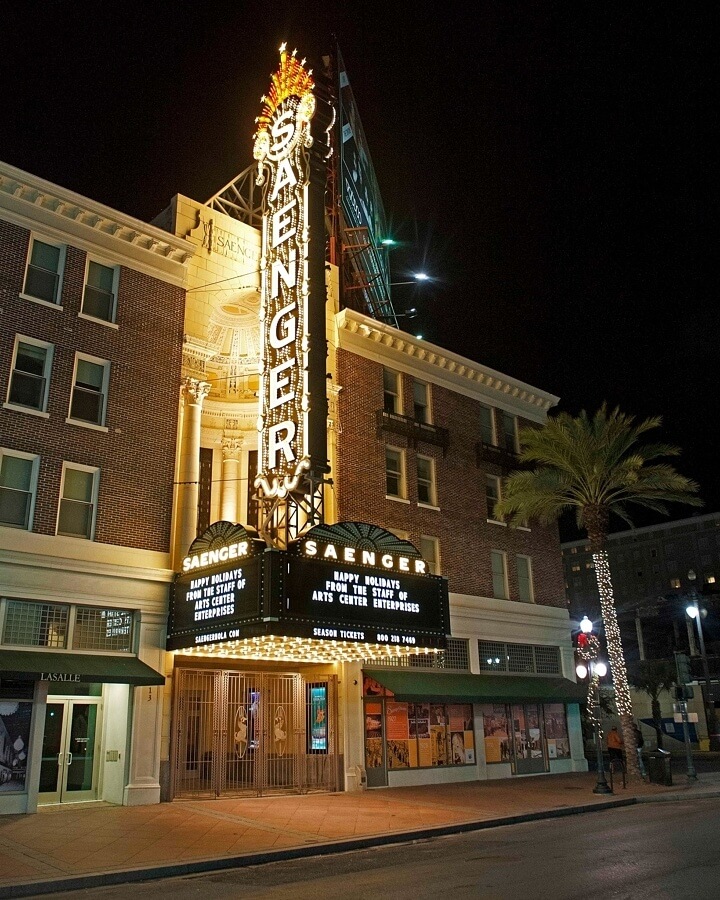
Louisville Palace | Louisville, KY
Fourth Street, in downtown Louisville, grew as a thriving theater district in the 1920s, but only one of the area’s landmark theaters survived urban renewal. Louisville Palace opened in 1928 as the Loew’s and United Artists State Theatre, and lovers of cinema and architecture marveled at the grand Spanish-Baroque design. Once the largest movie house in Kentucky, the theater has been a venue for live entertainment since 1981.
After sitting dormant for many years, the theater reopened in 1994, and the restoration and rebirth of the Louisville Palace reestablished it is an epicenter for the arts. Outfitted with original terrazzo flooring, fish fountains in the lobby, a grand staircase leading to the second floor mezzanine, and a curved and vaulted ceiling with a display of stars, the spectacular design mimics a Spanish courtyard with ornate detailing and extravagant finishes. Fourth Street, once again, is a destination for entertainment.
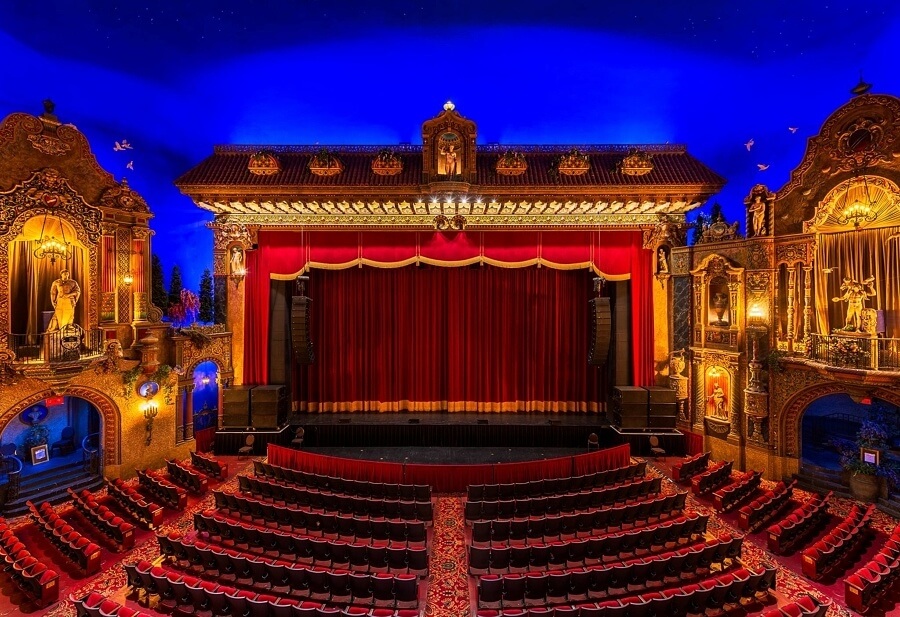
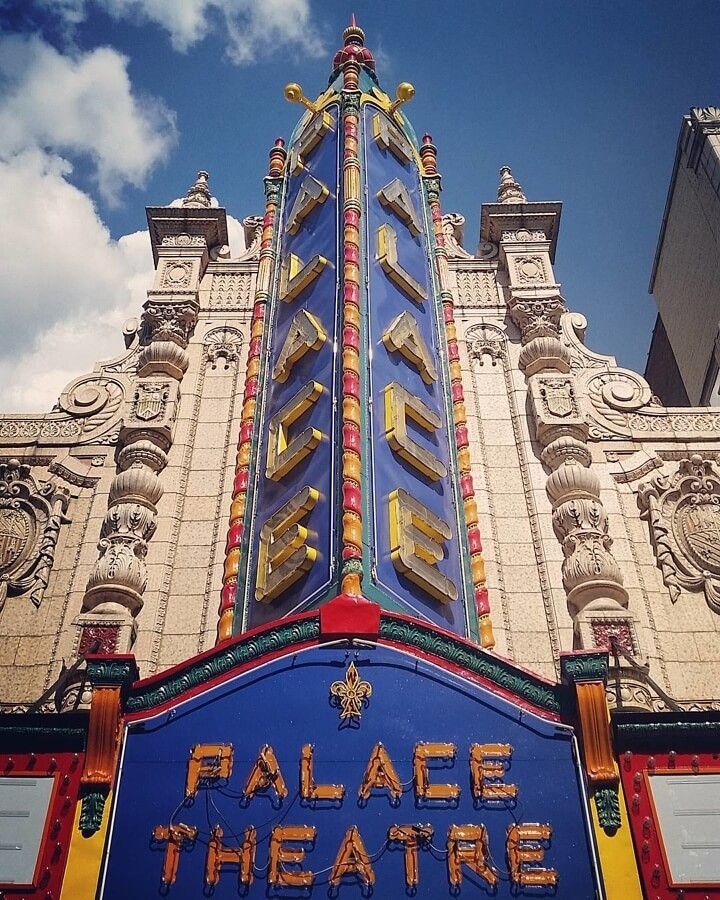
Next time you visit these Southern cities, pay a visit to their beautiful, historic theaters!
**********
For the best of the South — straight to your inbox! — subscribe to our newsletter HERE!



















